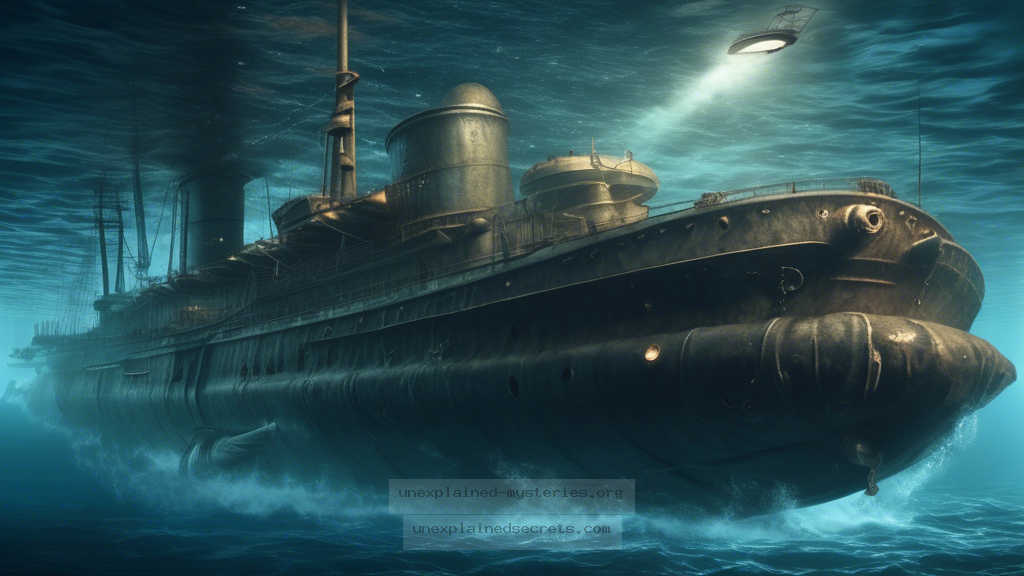What Caused the Mysterious Disappearance of the USS Cyclops in 1918?
What Caused the Mysterious Disappearance of the USS Cyclops in 1918?
The disappearance of the USS Cyclops is one of the most perplexing mysteries in maritime history. This naval cargo ship vanished without a trace in March 1918 while en route from Barbados to Baltimore, carrying over 300 men and a full load of manganese ore. The intrigue surrounding the Cyclops has not only captured the imagination of historians and researchers but has also led to numerous theories, ranging from natural disasters to supernatural phenomena. Understanding this mystery is significant as it highlights the limitations of our knowledge regarding navigation, the sea, and the unexplained events that can transpire on it.
Historical Context of the USS Cyclops
The USS Cyclops was a collier ship in the United States Navy, commissioned in 1917 during World War I. It was part of a fleet tasked with transporting coal and other materials necessary for war efforts. The ship’s last voyage began on March 16, 1918, after departing from the West Indies. The Cyclops was due to arrive in Baltimore within a week, but it never made it. This was not just a loss of a ship; it was one of the largest single-ship disappearances in naval history. The mystery deepened as no wreckage was ever found, and no distress signals were sent.
Theories Surrounding the Disappearance
Several theories have emerged regarding the fate of the USS Cyclops, each presenting unique perspectives on this maritime enigma. Here are some of the most widely discussed:
- Natural Disasters: The Bermuda Triangle, a region notorious for unexplained disappearances, has often been linked to the Cyclops. Some theories suggest that the ship may have encountered a violent storm or rogue waves.
- Structural Failure: It was reported that the Cyclops may have had issues with its hull. If the ship was compromised, it could have sunk rapidly without a distress call.
- Enemy Action: During World War I, some speculated that the ship might have been sunk by a German U-boat. However, this theory lacks supporting evidence.
- Mutiny or Sabotage: The possibility of a mutiny or sabotage has also been considered, fueled by the ship’s large crew and the tensions of wartime. Yet, like the enemy action theory, this remains unproven.
Core Concepts or Theories: The Bermuda Triangle
The infamous Bermuda Triangle covers a region in the western part of the North Atlantic Ocean. Its vertices are generally considered to be Miami, Bermuda, and Puerto Rico. The area has gained notoriety for the mysterious disappearances of ships and aircraft. Advocates of the Bermuda Triangle theory argue that unusual magnetic anomalies may interfere with navigational instruments. This could potentially lead to errors in navigation, resulting in vessels becoming lost or crashing.
Though the Bermuda Triangle has been the subject of numerous documentaries and books, it is essential to approach these claims critically. Investigations have shown that the number of incidents in the Bermuda Triangle is not significantly higher than in other heavily traveled regions of the ocean. Additionally, many disappearances can be attributed to human error or natural phenomena, such as storms. 💡
Practical Evidence: Search and Rescue Efforts
Following the disappearance of the USS Cyclops, the U.S. Navy conducted extensive search and rescue operations. These efforts included deploying aircraft and ships to comb the waters for any signs of wreckage or survivors. Unfortunately, nothing was found. The absence of debris or confirmed distress signals has fueled speculation and conspiracy theories, as it is unusual for a vessel of this size to vanish without a trace. The lack of evidence has led to the conclusion that the Cyclops likely sank quickly and without warning. ⚠️
Alternative Perspectives: Debunking the Myths
While the mystery of the USS Cyclops is captivating, it is crucial to distinguish between fact and fiction. Many myths surrounding the Bermuda Triangle have been sensationalized in popular culture. For instance, the idea that the area is cursed or home to supernatural forces lacks scientific support. Additionally, many of the supposed disappearances attributed to the Triangle have been found to have logical explanations, such as navigational errors or mechanical failures. ✅
Common Misconceptions and Clarifications
One common misconception is that the Bermuda Triangle is the most dangerous area for maritime navigation. In reality, the Atlantic Ocean is one of the busiest shipping routes in the world, and incidents occur throughout its expanse. The majority of the vessels that have traversed the Bermuda Triangle have done so safely, and many of the supposed mysteries have been resolved upon closer examination. Clarifying these misconceptions helps in understanding that while the Cyclops mystery is intriguing, it is part of a broader narrative about human interaction with the ocean.
Best Practices for Investigation or Study
For those interested in maritime mysteries like that of the USS Cyclops, several best practices can enhance the investigation:
- Research Historical Records: Dive into naval archives, logs, and records to gather evidence and accounts of the ship’s last voyage.
- Engage with Marine Experts: Consult oceanographers and historians to gain insights into the environmental factors that could contribute to such disappearances.
- Utilize Modern Technology: Leverage satellite imagery and underwater drones to explore the depths of the ocean where wrecks may lie undiscovered.
Future Developments or Ongoing Research
As technology advances, the potential for uncovering new information about the USS Cyclops increases. Ongoing research into underwater topography and marine archaeology may eventually yield new clues. The use of sonar mapping and autonomous underwater vehicles could lead to significant breakthroughs in locating lost vessels. Researchers are also examining historical records with fresh eyes, using modern data analysis techniques to uncover patterns or anomalies that were previously overlooked. The continued study of maritime safety and navigation practices may help prevent future tragedies.
Conclusion: Reflections on the Disappearance of the USS Cyclops
The disappearance of the USS Cyclops remains an enduring mystery and reflects the broader complexities of human interaction with the sea. While numerous theories abound, the lack of evidence makes it difficult to pinpoint a definitive cause. Understanding this enigma requires a careful examination of historical context, navigation practices, and human factors that contribute to maritime incidents. As researchers delve deeper into the mysteries of the ocean, we may yet uncover the fate of the Cyclops, but for now, it stands as a testament to the unknowns of our natural world.
Other Articles
Recent Posts
- What Happened to Flight MH370? The Conspiracy Theories That Still Haunt Us
- What Secrets Lurk Within the Walls of the Infamous Trans-Allegheny Lunatic Asylum?
- What Evidence Supports the Existence of Bigfoot in the Pacific Northwest?
- What Happened to the Indus Valley Civilization? Unraveling the Mysteries of Ancient Urban Life
- Can Telepathy Be Scientifically Proven Through Laboratory Evidence?







